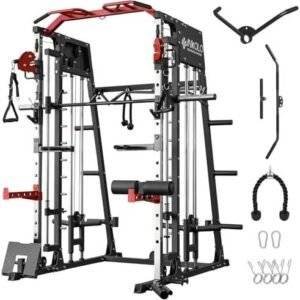In an age where physical fitness and well-being are increasingly prioritized, the significance of stability cannot be overstated. Balance is not merely an attribute of athletic performance; it is a fundamental component of daily living that contributes to overall health, prevents injuries, and enhances mobility at any stage of life. As the population ages and the prevalence of chronic conditions rises, understanding and implementing effective balance training becomes paramount. This article delves into the multifaceted aspects of balance training, presenting a comprehensive program designed to enhance stability through targeted exercises, progressive methodologies, and evidence-based practices.
Drawing on the latest research in sports science and rehabilitation, we will explore the physiological principles behind balance, its critical role in functional movement, and the impact of balance deficits on quality of life. Furthermore, we will examine various training modalities, incorporating strength, flexibility, and proprioception activities to create a holistic approach that not only mitigates the risk of falls but also fosters confidence and agility in movement. From beginners seeking to improve foundational stability to athletes aiming to refine their performance, this program is tailored to meet diverse needs, ensuring that everyone can benefit from its implementation.
As we embark on this exploration of balance training, we aim to equip practitioners, fitness enthusiasts, and individuals alike with the knowledge and tools necessary to enhance stability, ultimately leading to improved functional performance and a healthier, more active lifestyle. Join us as we unpack the essential components and strategies of an effective balance training regimen that is both comprehensive and adaptable to individual capabilities and goals.
Table of Contents
- Understanding the Importance of Balance Training in Physical Performance
- Key Components of an Effective Balance Training Program
- Progressive Techniques for Improving Stability and Coordination
- Incorporating Balance Training into Daily Routines for Long-Term Benefits
- In Retrospect
Understanding the Importance of Balance Training in Physical Performance
Balance training plays a crucial role in enhancing not just athletic performance, but overall physical functioning. By improving stability and coordination, individuals can experience reduced risk of injury during both everyday activities and high-intensity sports. The following benefits illustrate why incorporating balance exercises into your fitness regimen is essential:
- Improved Coordination: Developing better balance enhances body awareness and improves coordination, which is vital for activities requiring precise movements.
- Enhanced Athletic Performance: Whether running, jumping, or cycling, a stable core allows athletes to execute dynamic movements more effectively, leading to improved scores and times.
- Injury Prevention: By strengthening the muscles around joints and improving proprioception, balance training can significantly decrease the likelihood of falls and injuries, particularly in older adults.
- Posture Improvement: Stronger balance aids in maintaining proper alignment, helping to alleviate common issues related to poor posture.
To effectively integrate balance training into your routine, consider the following program components that can target various aspects of stability:
| Exercise | Description | Duration |
|---|---|---|
| Single Leg Stand | Stand on one leg while focusing on keeping your balance. | 30 seconds each leg |
| Bosu Ball Squats | Perform squats on a Bosu ball to engage stabilizing muscles. | 3 sets of 10 reps |
| Balance Board Exercises | Use a balance board to enhance core stability and ankle strength. | 5 minutes daily |
Key Components of an Effective Balance Training Program
To establish a robust balance training program, it is crucial to incorporate a variety of exercises that target different aspects of balance. Static balance exercises, such as single-leg stands or balance on a wobble board, are essential for building foundational stability. These kinds of exercises help in enhancing proprioception and core strength. In addition, dynamic balance activities like walking heel-to-toe, side shuffles, or stability ball activities challenge your body to adapt to shifting movements, which is vital for functional daily tasks. Combining both static and dynamic elements ensures a comprehensive approach to developing balance.
Incorporating progressive overload principles is another key component of an effective balance training program. As participants gain strength and coordination, gradually increasing the difficulty of exercises can promote continued improvement. This can be achieved through:
- Increasing the duration of balance holds
- Adding resistance or weights
- Incorporating unstable surfaces like balance discs or foam pads
Furthermore, monitoring progress through regular assessments, such as tracking time held in balance positions or performance in functional tasks, can provide valuable insights and motivation. A well-structured program should also include variability to prevent plateaus and keep participants engaged.
Progressive Techniques for Improving Stability and Coordination
Improving stability and coordination is vital for everyone, from athletes to seniors seeking better mobility. To achieve this, a variety of progressive techniques can be implemented to nurture the body’s neuromuscular system and enhance proprioception. Balance boards, for instance, are a fantastic tool that challenges the body’s equilibrium and core strength simultaneously. Incorporating exercises such as squats or single-leg stands while on a balance board can amplify the training effect. Other beneficial techniques include using stability balls and BOSU trainers to engage multiple muscle groups while promoting stability.
In addition to tools, specific exercise routines that gradually increase in difficulty can significantly contribute to improved stability and coordination. Consider incorporating dynamic movements like lateral shuffles and agility ladder drills. Additionally, integrating practices such as yoga and tai chi can enhance body awareness and control. Below is a simple outline of effective exercises to incorporate into a progressive training program:
| Exercise | Difficulty Level | Benefits |
|---|---|---|
| Single-leg Balance | Beginner | Improves proprioception and ankle stability |
| Balance Board Squats | Intermediate | Enhances core strength and lower body stability |
| BOSU Ball Push-ups | Advanced | Engages upper body while reinforcing core engagement |
Incorporating Balance Training into Daily Routines for Long-Term Benefits
To weave balance training seamlessly into your daily life, consider integrating simple exercises into your routine. You can start with basic movements that strengthen your core and improve stability. For instance, try standing on one foot while brushing your teeth or performing gentle leg lifts while watching TV. Every little bit helps, and these brief moments add up to significant benefits over time. Incorporating such activities can enhance your proprioception, allowing you to become more aware of your body’s position, which is crucial for preventing falls and injuries.
Furthermore, embracing balance training can extend beyond isolated exercises. Engage in activities that naturally incorporate stability challenges, such as yoga or tai chi. You can also incorporate balance drills during your workouts, such as using a balance board or performing squats on one leg. Below is a table showcasing different balance exercises tailored for various settings:
| Exercise | Setting | Duration |
|---|---|---|
| Single-leg Stand | Home | 30 seconds each leg |
| Balance Board Squats | Gym | 3 sets of 10 reps |
| Tai Chi | Outdoor | 30 minutes |
| Yoga Tree Pose | Home or Studio | 1 minute each leg |
By strategically incorporating these exercises throughout your day, you can turn mundane activities into opportunities for improving balance and stability. Such consistent practice not only enhances your physical capabilities but also fosters a greater sense of confidence in your movements, ultimately leading to long-term wellness and mobility improvements.
In Retrospect
implementing a comprehensive balance training program is not merely an exercise in physical fitness; it is a crucial investment in overall health and well-being. As our exploration of various training methodologies demonstrates, effective balance training can significantly enhance stability, reduce the risk of falls, and improve functional mobility across different age groups and physical conditions.
The multifaceted approach outlined herein, from strength-building exercises to proprioceptive and agility training, ensures that individuals can customize their routines to address specific needs and goals. Furthermore, the integration of technology and innovative tools, such as balance boards and stability balls, presents exciting opportunities to engage in dynamic and enjoyable training sessions that can be adapted to both individual and group settings.
As we move forward, it is essential to continue advocating for the inclusion of balance training in rehabilitation programs, athletic training, and everyday exercise routines. By fostering a culture that recognizes the importance of stability-enhancing practices, we can empower individuals to take control of their health, enhance their performance, and extend their quality of life.
We encourage readers to start their own balance training journey today, armed with the knowledge gained from this article. Whether you are a fitness professional, a therapist, or simply someone interested in enhancing your well-being, prioritizing balance training will undoubtedly pave the way for a more stable, resilient, and active future. Remember, the foundation of movement is stability—let’s commit to building that strong foundation together.




